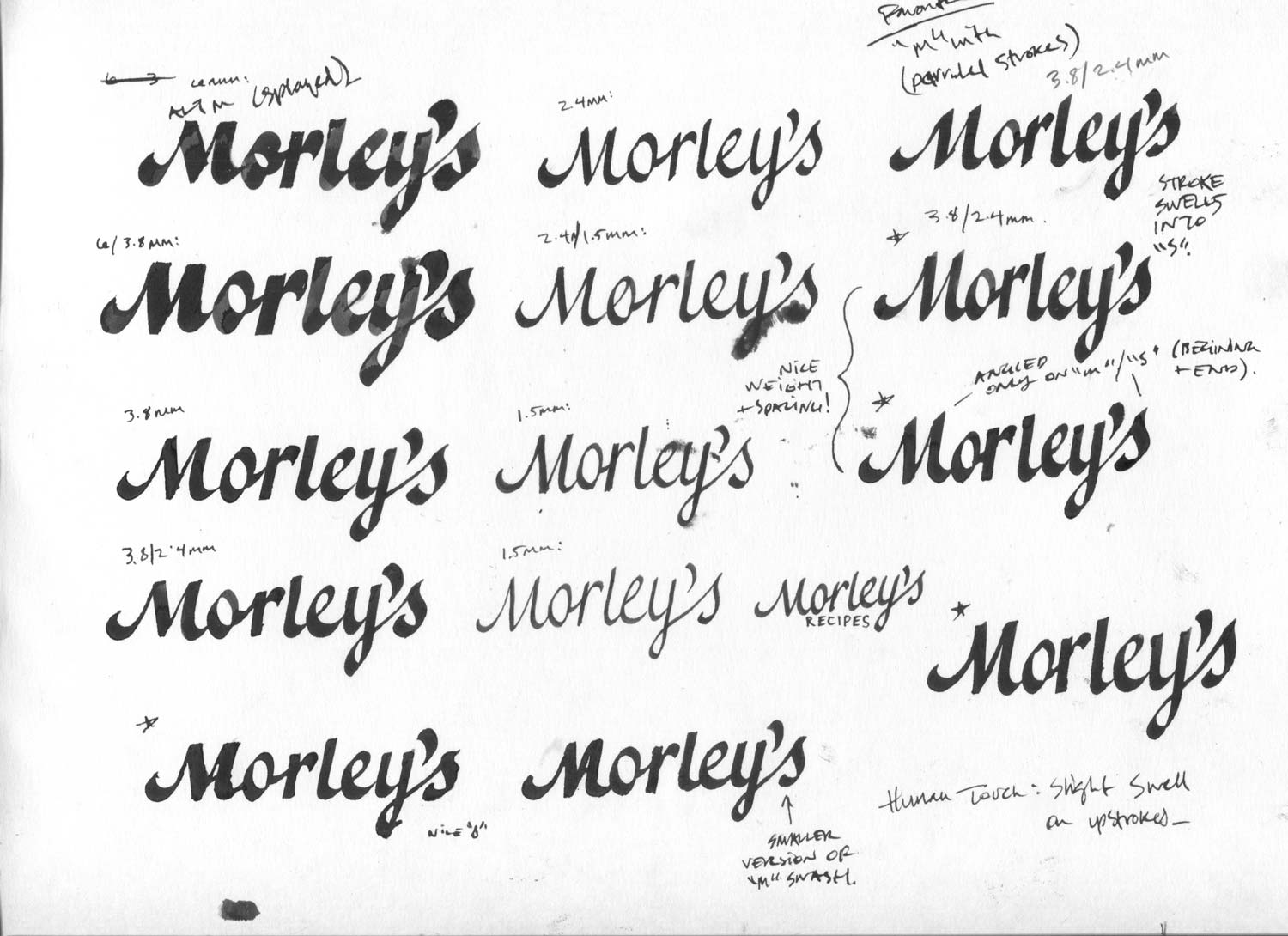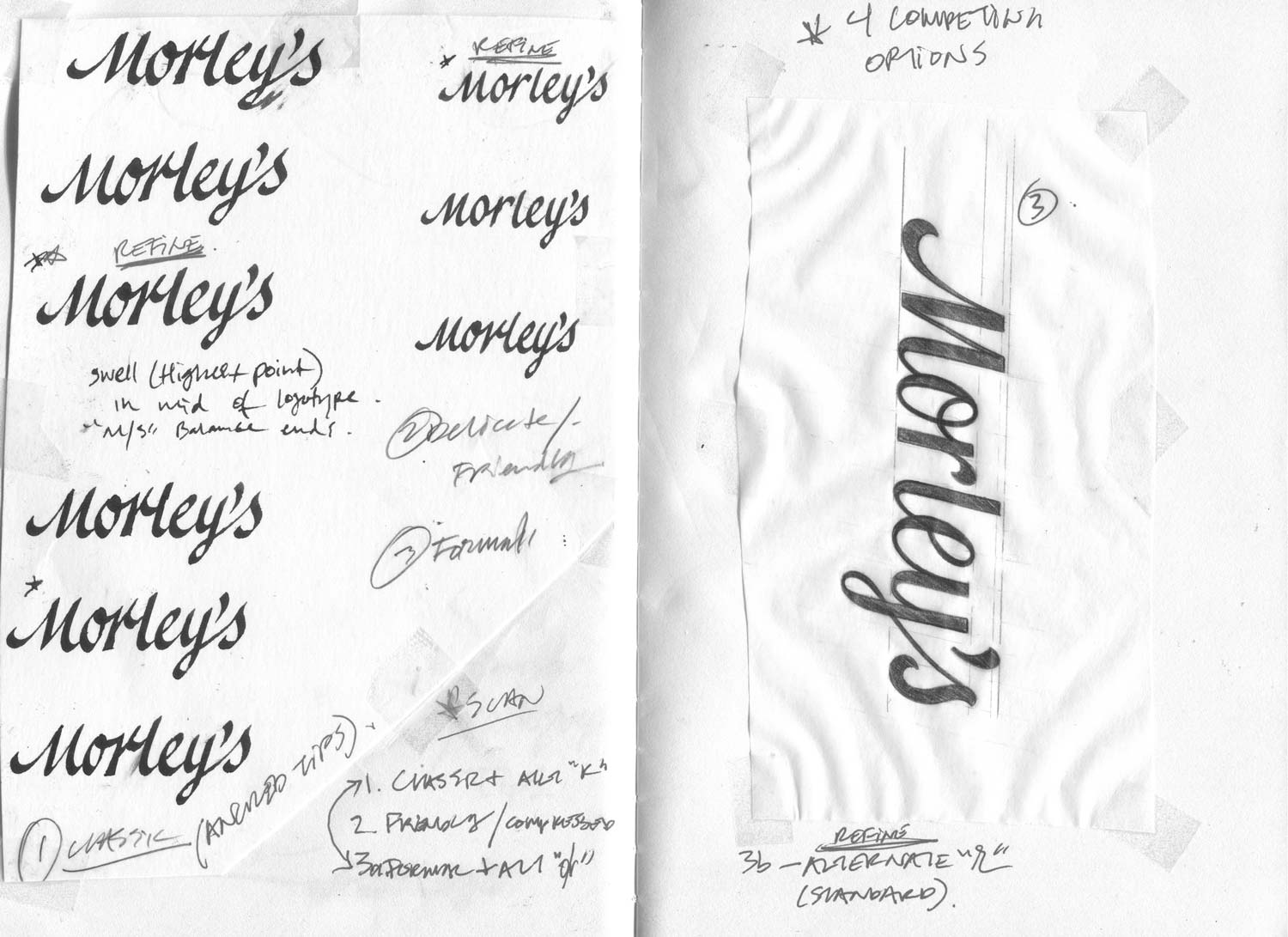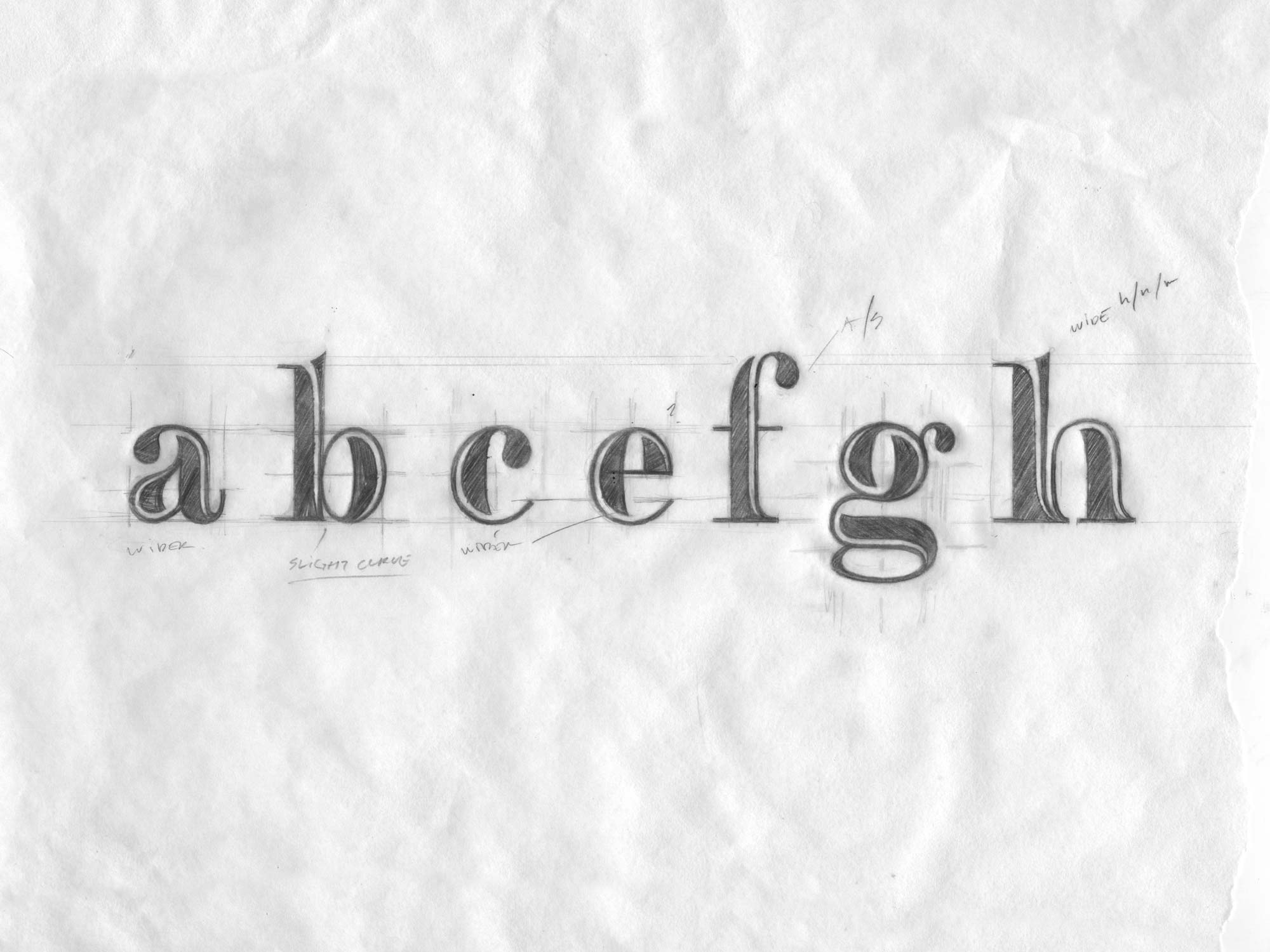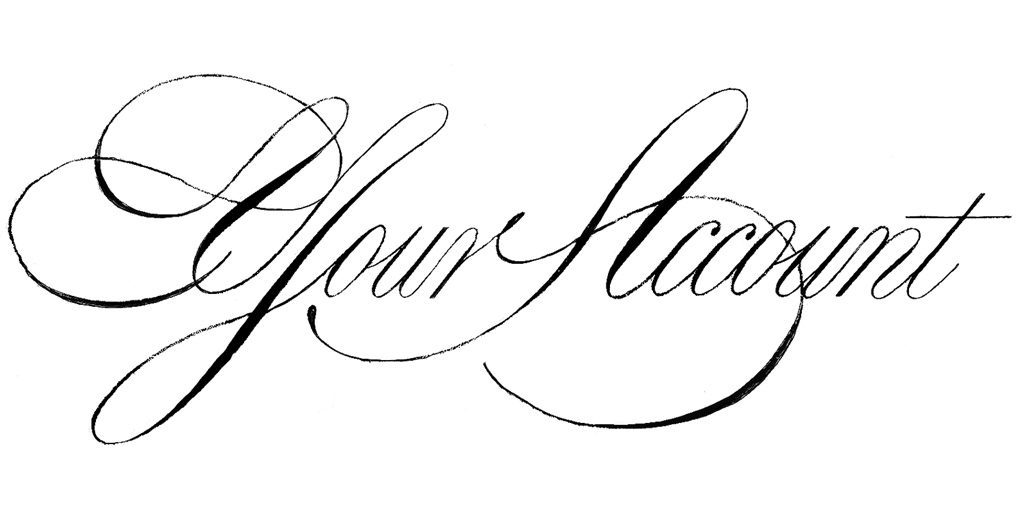A simple framework reduces the time required for administrative work and allows the majority of energy and effort to be applied to design work.
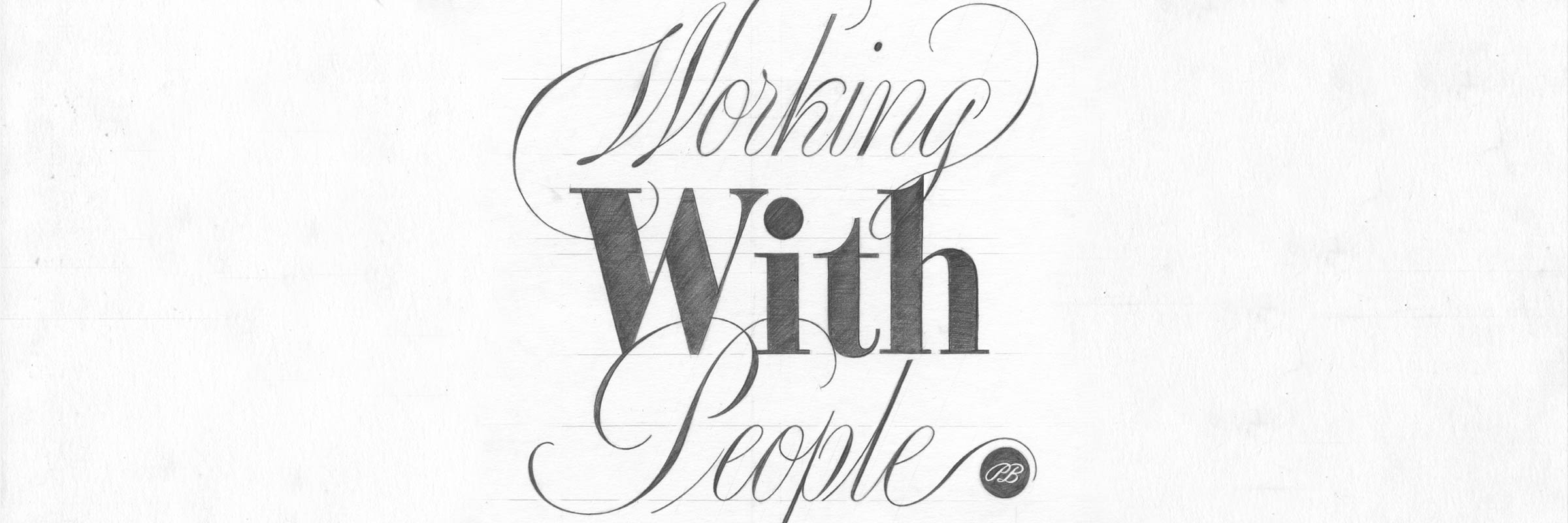
a freelance framework for designing custom typography for clients
Variety and chaos are abundant in freelance work, making a simple process framework valuable for efficiently and gracefully addressing a project’s unique challenges. This post – intended for potential clients and fellow designers – includes information about the process and techniques I use to ensure successful results when designing custom logos, type, and lettering for clients.
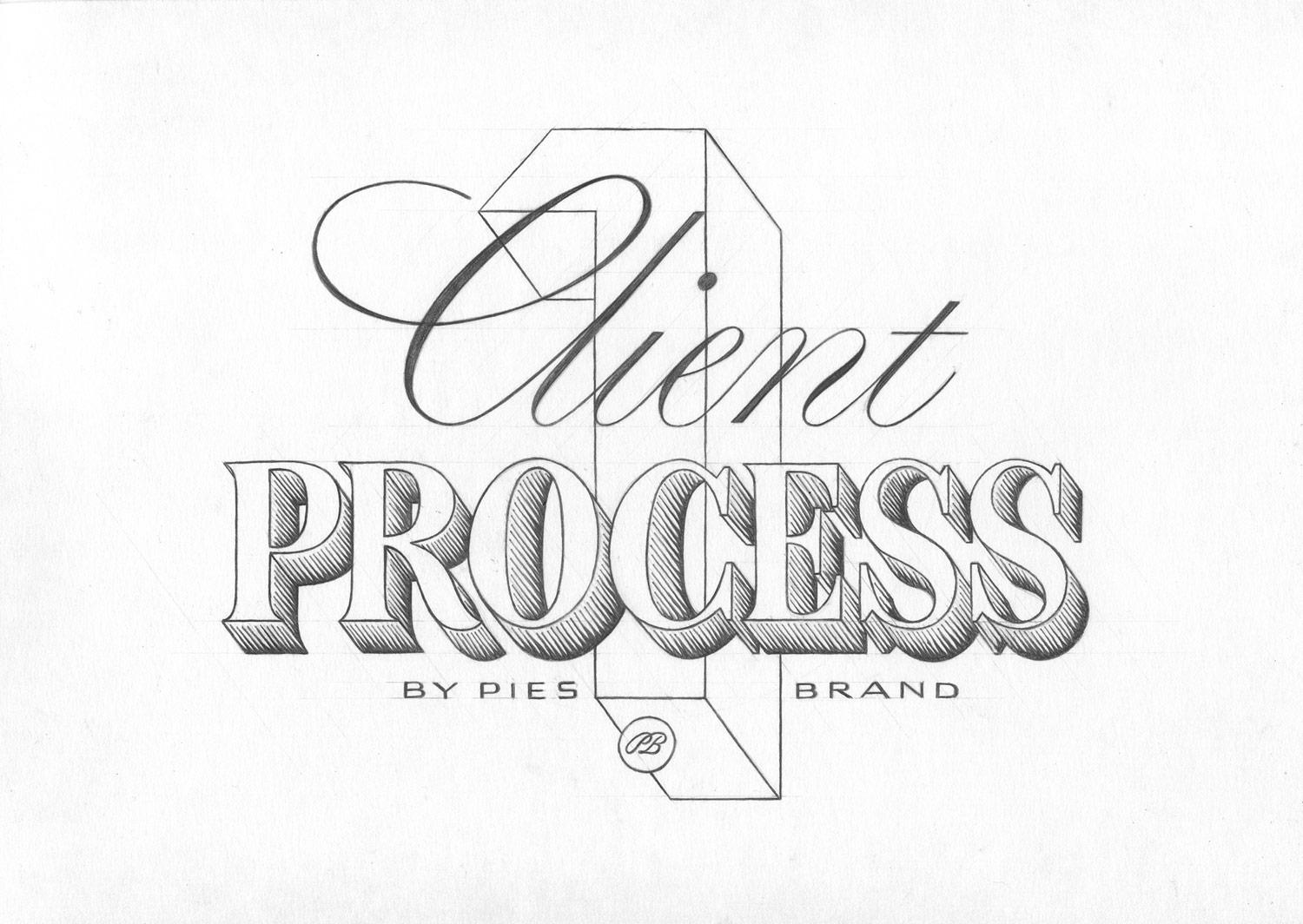
Part 1. Client Process
A simple framework reduces the time required for administrative work and allows the majority of energy and effort to be applied to design work. While many projects do not require the entire process listed below, I’ve mentioned all the steps to provide a complete understanding of each one’s importance and corresponding goal(s).
a. Inquiry – With a little bit of magic, people find your work, admire it, and have a use for it that inspires an inquiry. The inquiry can come through a variety of channels and ideally includes a general description of the project and information about who it’s for.
b. Follow-up – The initial inquiry rarely includes all of the details necessary to get started on a project proposal. So, I respond with questions designed to fill in the gaps. I don’t ask why-related follow-up questions because they’re slightly accusatory, and I find it easy to infer ‘the why’ after gathering information about the project and client. Below is a list of all the information I collect before moving forward:
- What will I be designing? defines the number of designs and their verbiage/content
- What are the goals of the project? provides insight to potential solutions
- Who is it for? understand what the design will represent
- Where and how will the design be used? licensing and optical size considerations
- Is there a deadline? prepares designers for bad dreams and extra stress
- Is there a preexisting art direction? stylistic requirements and direction(s) of interest
With the client’s answers, I can develop a complete understanding of the unique goals and challenges of the project and begin thinking about solutions.
c. Project proposal – Everything is combined into a single document. I outline the details, goals, and challenges. I also provide pricing, a design process summary, thoughts on potential directions, and a contract agreement for the client to sign and return if interested in moving forward.
Download my project proposal with notes for designers
d. Kick-off meeting – If possible, it’s nice to meet in real life, but a Zoom, Google, or phone call is a good fallback for distant clients. Talking before getting started provides a dose of healthy human contact and often provides subtle insights that the discovery questions missed.
e. Design process – Generally, I divide projects into three stages: rough, revised, and final. This system provides structure without restricting creative freedom. As we progress through the process, the number of concepts decreases, and attention to detail increases:
- Rough – The low level of technical refinement allows for a broad exploration of ideas relating to the project’s art direction.
- Revised – Increased technical sophistication helps compare potential between concepts and decide on the final direction.
- Final – Fully considered and refined final design(s).
f. Presenting work – At the end of each stage in the project, I create a presentation on a password-protected page on my website. In it, I showcase the entire process and carefully consider the highlighted designs and thoughts. This method gives me time to refine the presentation and the client time to think about their feedback. The client is given the choice to submit feedback via call or email.
- Web – A complete presentation of thoughts and images that clearly explain the goals and solutions from the round of concepts. Web presentations give the client time to read and digest the information before providing feedback.
- Live – When time is an issue, a live presentation of thoughts and images is more practical than a refined web presentation.
g. Finalization – Once the final designs are approved and the client makes the final payment, I double-check every anchor point, curve, and detail to ensure the design is perfect before sending the final files
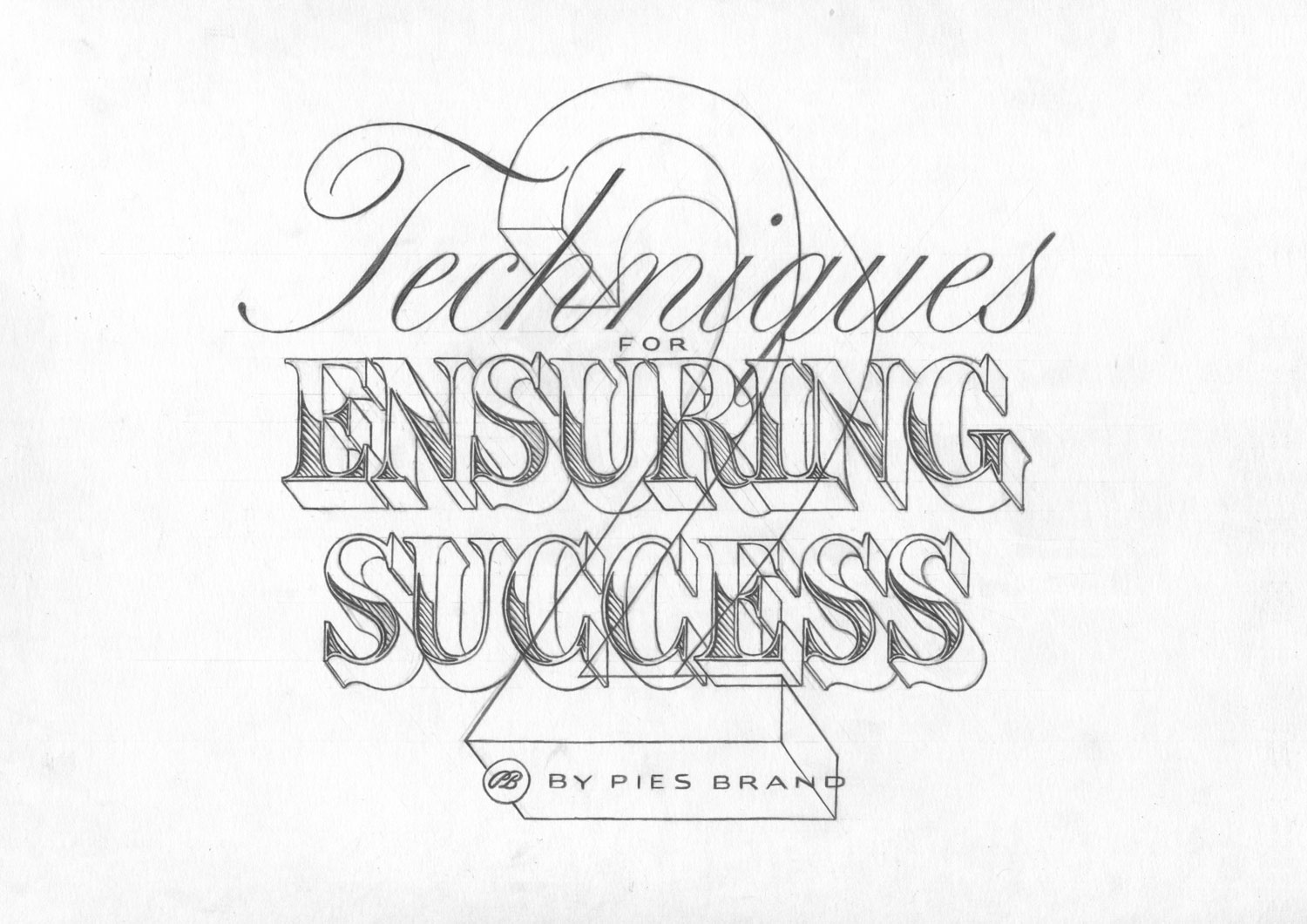
Part 2. Techniques For Ensuring Success
Applying a few simple techniques can ensure the success of any project, regardless of its unique characteristics and challenges:
a. Develop a process – Hopefully, this post is helping you with that. Implementing a simple client process that is easy to communicate and adapt reduces time spent on administrative work and creates time for design.
b. Adapt – Embrace the unique chaos of each project and consider making practical adaptations to your process. An ad agency with a short deadline might not require a full rough concept presentation with thoughts and images. Instead, establishing a clear art direction and jumping straight to revised concepts – presented through a live presentation – would save time without much sacrifice in clarity and thoroughness.
c. Communicate with efficient clarity – While staying open to the client’s input and perspective, direct the entire process with clear information and thoughts. This technique creates understanding and allows for the quick resolution of conflicting perspectives.
d. Push favorite(s) – Highlighting your favorite directions early in the design process is an efficient way to steer the project in the correct direction. Boldly showcasing the ‘strongest direction(s)’ along with a logical defense as to why they’re the best creates a little bit of fear, which results in either an agreement or disagreement. Both results lead to valuable, honest feedback that can be applied to the next round of refined concepts.
e. Repeat a stage if necessary – In the rare instance, that all concepts in a presentation miss the mark, repeat the exploration. If you’re communicating, pushing favorites, and listening to feedback, re-directing and getting back on track is quick and easy.
f. Consider every detail – Ultimately, a project will naturally arrive at a strong solution if the process is meticulous and considerate of the options and goals. To gauge the quality of a design, I consider it through three perspectives:
- Broad goal(s) – Is the design the best solution for achieving the project goals and requirements?
- Typographic detail – Are the proportion, weight, kerning, and optical modifications fully resolved?
- Beauty – Are the curves and weight transitions graceful? Is the rhythm appealing and inviting to read? Is the design a prime example of the style it embodies?
There is a degree of uncertainty in every project. Sometimes, the strongest solution emerges early on, and sometimes, it puts up a great fight, requiring immense amounts of trial and error before being discovered. With persistence and clear communication, the ‘right one’ always shows up.
Despite the challenges and chaos involved in freelance work, working with passionate people who love and respect your work is an amazing feeling that makes the challenge worth it. Additionally, I have included an example project to showcase how I present my work to clients, along with a Q&A section to address specific audience questions.
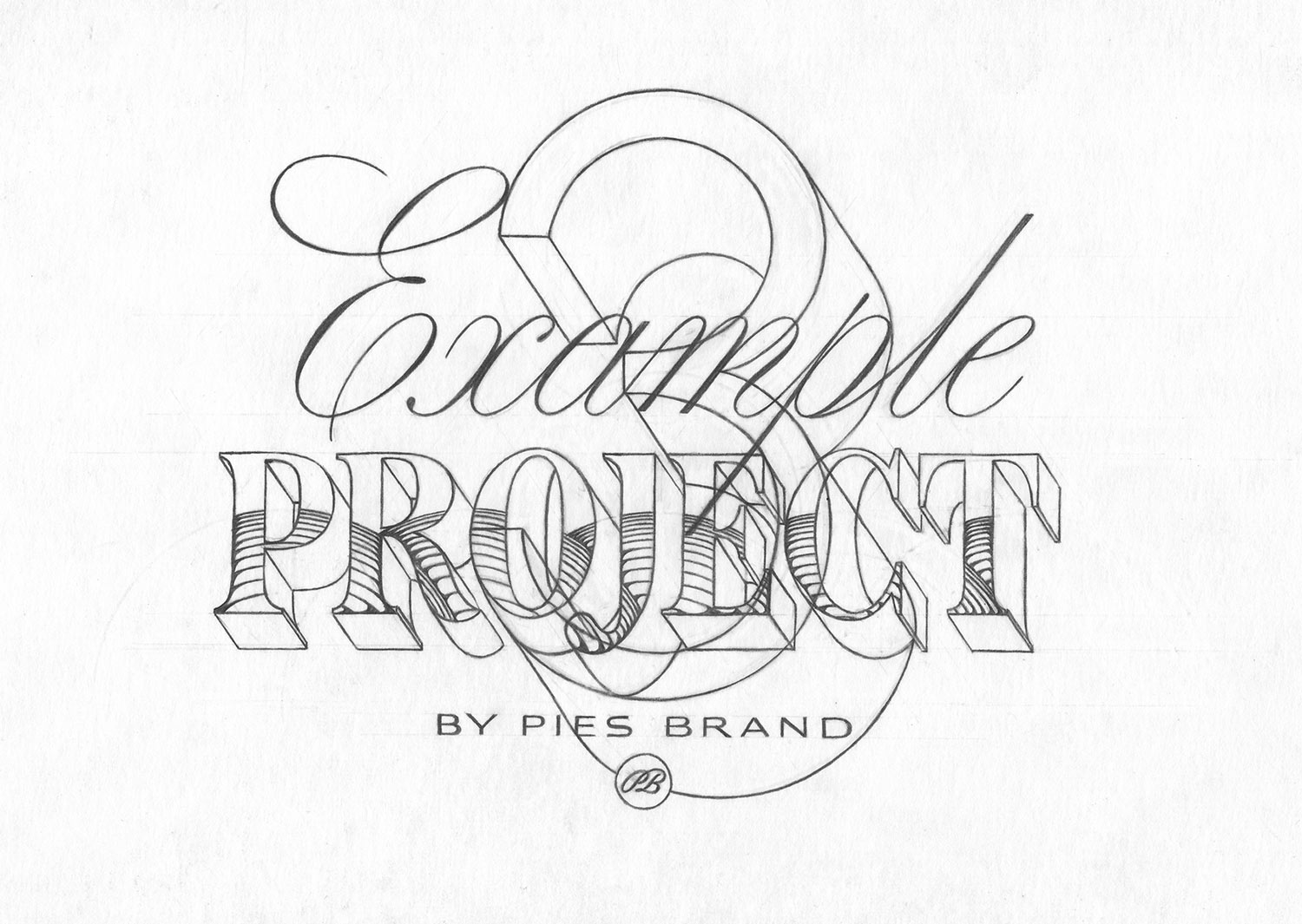
Part 3. Example Project
To give potential clients and designers a sense of my design process and communication style – I’ve included an example project – consisting of five slightly modified web presentations made to Morley’s, a vegan food company based in Australia. In the example, you’ll see how I structure the process to be considerate of the project’s goals and art direction and how I format and communicate thoughts and images.
View process example
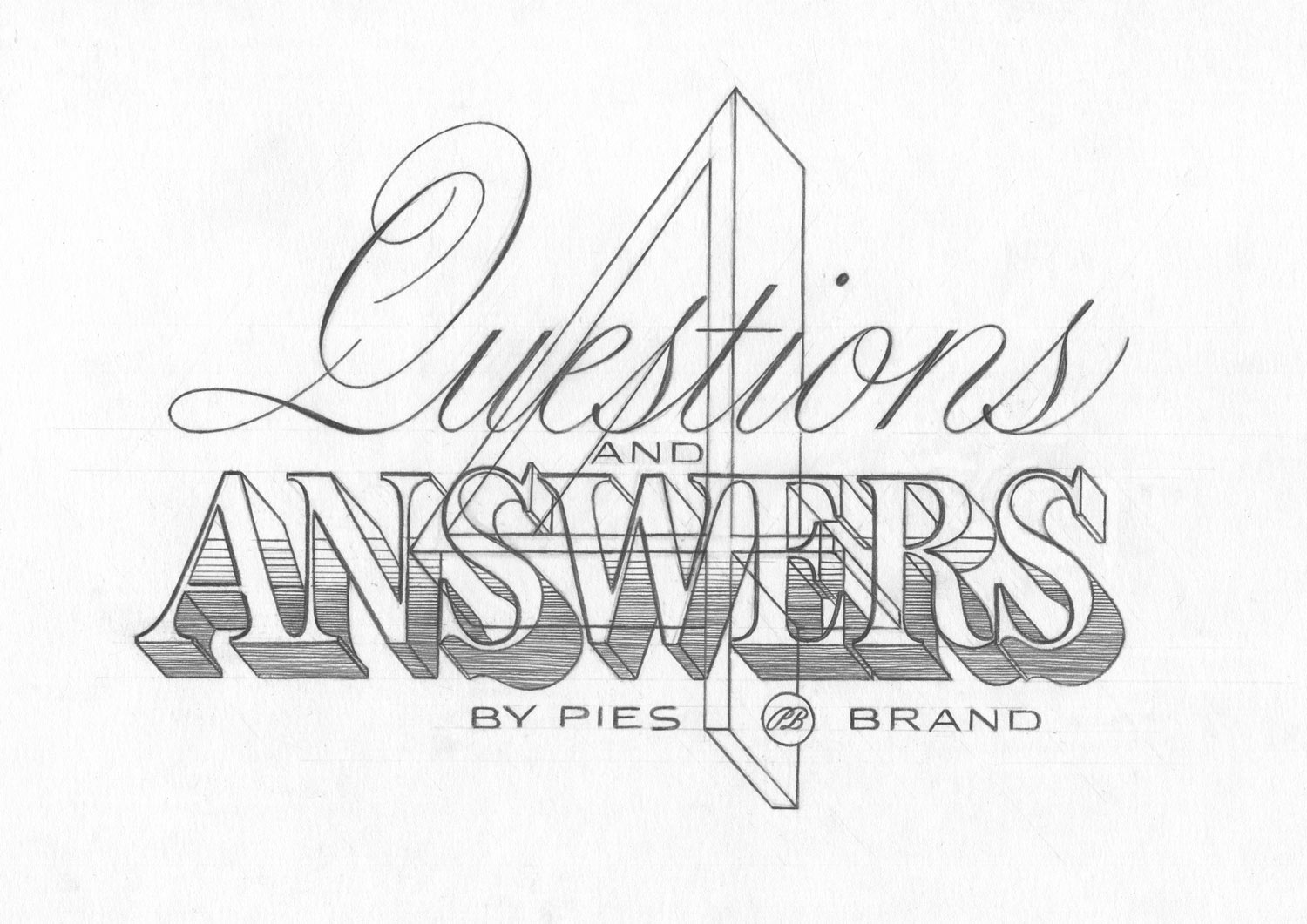
Part 4. Questions
I asked my social media following if anyone had questions or challenges about working with people. I received three responses, which I’ve done my best to answer below:
a. How do you market specific skills (in the context of calligraphy and lettering) to potential clients/employers who may be averse to the idea?
There are two steps involved in marketing work. The first step is to define the type of work you are interested in. The second step is to showcase your skills and competency by sharing work demonstrating an ability to arrive at a successful result.
Instead of pitching services to potential clients – who may be averse to the idea of your work being valuable – I prefer to share my work publicly and let people decide if they can utilize it. This approach avoids wasted effort and filters out clients who don’t recognize and respect the value of your abilities.
During times when work is scarce, I prioritize practice and personal development over increased promotional efforts. Even though this route lacks near-term financial benefits, I believe the increased rate of development is a worthwhile investment in the long run.
b. I’ve always wondered about the relationship between price and value for lettering. In other words, how does one not lose money by offering something so niche and time-consuming?
Seven years ago, I was beyond excited to receive my first-ever logo design inquiry. After learning about the details, I nervously sent over a project proposal containing an outline, contract agreement, and quote for $250. I was ecstatic when the 50% deposit came through and spent the next month and a half working through art direction, rough sketches, revised sketches, and a final vector trace. Through intense effort and the fear of designing something inadequate, the final logo reflected a level of refinement superior to what my skill should have allowed.
I wasn’t losing money on the project, but when considering the amount of work invested, I was making about $5/hour. To keep up with the average U.S. salary, I would need to complete 240 similar projects per year, which I thought was a slightly unrealistic target.
By this time, I’ve decreased the amount of projects I need per year to about ten. This ability to charge more is due to increased skill, portfolio quality, and client relationships built over the years. Eventually, I’d like to create a post about pricing, but for now, helping designers understand what makes a typographic logo valuable is a more manageable goal for the Q&A section.
A logo is “a symbol or design that identifies a brand.” The value of a logo is associated with two features: how it portrays a brand, product, or service and its capacity for longevity. The former feature is concerned with image and the latter with lifespan. Both have the potential to create tremendous value for brands.
- Image – Logotypes are informational depictions of a brand’s quality and personality.
- Lifespan – Considerate, refined logos have a high degree of longevity, reducing costs associated with re-designs and implementing new designs.
Despite being a niche and time-consuming practice, hand-lettering and type design provide significant value through custom logos that curate an image and ensure the long lifespan of a design.
c. How do you push through rejection and discouragement?
The two most discouraging aspects of freelancing are having project proposals rejected and experiencing stretches with no work. These moments invoke a sense of panic, doubt, disappointment, and inadequacy. With practice, I have learned to nearly eliminate those feelings by immediately continuing work on one of my many self-initiated projects when a project doesn’t work out or when faced with vast amounts of free time. This technique allows for continual progress and turns an unfortunate moment into an opportunity.
I frequently question if freelancing is the right path. To create inner peace and combat self-doubt, I embrace the chaos and look at my past and present experiences from a perspective of gratitude. Pursuing typography and design has led to a multitude of exciting opportunities and friendships, which have caused me to develop a more positive perspective of the world. Despite all the struggles and discomfort resulting from working for oneself, the rewards make it worth it.
Conclusion
If you found this post helpful, please share it on the social media platform of your choice (icon bar to the left) or send me an email, sharing your thoughts and feedback. Lastly, I’m beginning work on an online hand-lettering and type design course that will give students a complete understanding of my design process and the considerations involved in both processes. If you’d like to receive progress updates, join the mailing list below or follow @piesbrand on Instagram.

